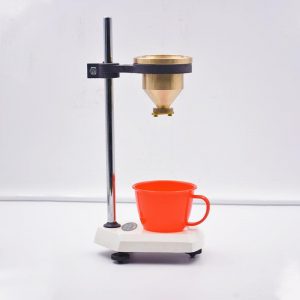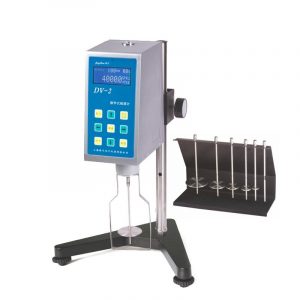Viscosity: The microscopic forces inside the liquid shape the macroscopic properties
Viscosity, for most people, may be a relatively unfamiliar word, but it plays a very important role in our daily lives. Viscosity is a key property of liquids, which describes how the interaction between molecules impedes the relative motion of the molecules under the action of external forces, thus affecting the flow properties of the liquid. The understanding and determination of this property is crucial for a wide range of fields, from chemicals to coating production. In this article, we will delve into the concept of viscosity, its measurement methods, and its application in different industries.
The concept of viscosity
Viscosity, also known as internal friction, is a property of a liquid that determines its resistance to flow under the action of an external force. In general, we express viscosity in terms of a simple ratio, that is, the ratio between the external force and the gradient of the resulting flow velocity. Specifically, the viscosity of a liquid can be defined as the ratio of shear force to shear rate, that is, dynamic viscosity, which is measured in Pa· second (Pa·s). Considering the effect of the density of the liquid on the viscosity, it is also possible to use the kinetic viscosity, which is defined as the ratio of the dynamic viscosity to the density of the liquid in square meters per second (m²/s).
The importance of viscosity is that it has a profound effect on the flow properties of liquids. In coating production, viscosity is a key performance index, which reflects the size of the molecular weight of the polymer in the paint. If the viscosity is too high, gelling may occur during the paint making process, which will affect the quality of the paint. If the viscosity is too low, it may cause insufficient solvent to be added, which seriously affects the performance of the film. Similarly, in the paint construction process, viscosity also plays an important role. High viscosity paint will lead to construction difficulties, poor film leveling, and low viscosity may cause problems such as flow hanging. Therefore, the accurate determination of viscosity is essential for both the process control of coating production and the quality assurance of the final coating product.
Viscosity: The microscopic forces inside the liquid shape the macroscopic properties
Method for determination of viscosity
In order to determine the viscosity of liquids, many methods have been developed, and different methods are suitable for different types of liquids. The following are some commonly used viscosity measurement methods:
1. Outflow method
The principle of outflow method is to use the gravity of the liquid itself to determine the viscosity. The specific operation is to pour the sample into the viscosity cup, and then plug the outlet hole of the viscosity cup with a stopper or finger. The viscosity of the liquid can be calculated by measuring the time required from the start of outflow to the break of the flow column, and the result is expressed in seconds (s). This method is suitable for liquid coatings with Newtonian or nearly Newtonian characteristics, such as low viscosity varnishes and color paints.

2. Vertical drop method
The principle of the vertical falling ball method is to determine the viscosity of the liquid by using the speed of the solid ball falling vertically in the liquid under the action of gravity. During operation, the time required for the steel ball to pass the distance between the upper and lower scales of the ball viscometer is determined, and the result is expressed in seconds (s).
3. Bubble Method
The principle of bubble method is to use the flow rate of bubbles in liquid to determine the viscosity of coating products. The specific operation is to load the sample to be tested into the tube, leaving room for bubbles, and then quickly turn the tube vertically 180° to observe the time required for bubbles to rise within a specified distance, the result is expressed in seconds (s).
Viscosity: The microscopic forces inside the liquid shape the macroscopic properties
4. Set the shear rate method
The set shear rate method uses a cylinder, disk, or blade to rotate in a paint sample to produce a rotary flow. The viscosity can be calculated by determining the stress required to bring it to a fixed shear rate. This method is commonly used to determine liquids such as high viscosity paints. Results are expressed in Pa· second (Pa·s).

The application of viscosity in different industries
The measurement methods of viscosity are varied, so it has a wide range of applications in various industries. Here are some examples of viscosity applications in key areas:
1. Coating industry
Viscosity is a crucial parameter in the coatings industry. By measuring the viscosity of the coating, the manufacturer can control the manufacturing process and ensure the consistency and quality of the coating. This helps to produce high quality paints for a variety of applications such as construction, automotive, furniture and more.
2. Chemical industry
In the chemical industry, viscosity determination is used to control the rate and viscosity of chemical reactions to ensure the quality of products. Especially in the polymer industry, viscosity is an important parameter, which is related to molecular weight and degree of polymerization, and has a significant impact on the performance of the final product.
3. Food and beverage industry
In the food and beverage industry, viscosity is a key quality indicator. For example, it is used to determine the texture and taste of sauces, jams and beverages. Measurement of viscosity can help manufacturers adjust formulations to meet consumer tastes and preferences.
Viscosity: The microscopic forces inside the liquid shape the macroscopic properties
4. Pharmaceutical industry
In the pharmaceutical industry, viscosity measurement is essential for the development and production of pharmaceutical preparations. Viscosity can affect the fluidity, stability and injection performance of the drug, and therefore requires precise control.
5. Petroleum and chemicals
In the field of petroleum and chemical industry, viscosity is an important parameter for the measurement of liquid petroleum products, which is of great significance for the storage, transportation and processing of oil products. In addition, in the chemical process, viscosity measurement is also used to control the flow of the reaction material.
conclusion
Viscosity is a key property to describe the flow properties of liquids, and it plays an important role in various fields. Different viscosity measurement methods are suitable for different types of liquids, thus meeting the needs of different industries. In various fields such as coatings, chemicals, food, pharmaceuticals and petroleum, the accurate determination of viscosity is crucial to the control of product quality and production processes. Therefore, it is very important for scientists, engineers and manufacturers to have a deep understanding and grasp of the concept and measurement of viscosity. Through accurate measurement of viscosity, we can better meet the needs of consumers and ensure that the performance and quality of products reach a higher level.
